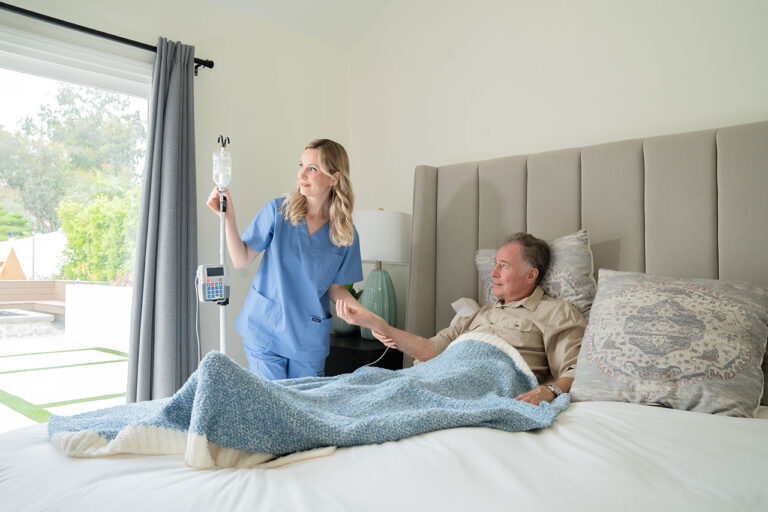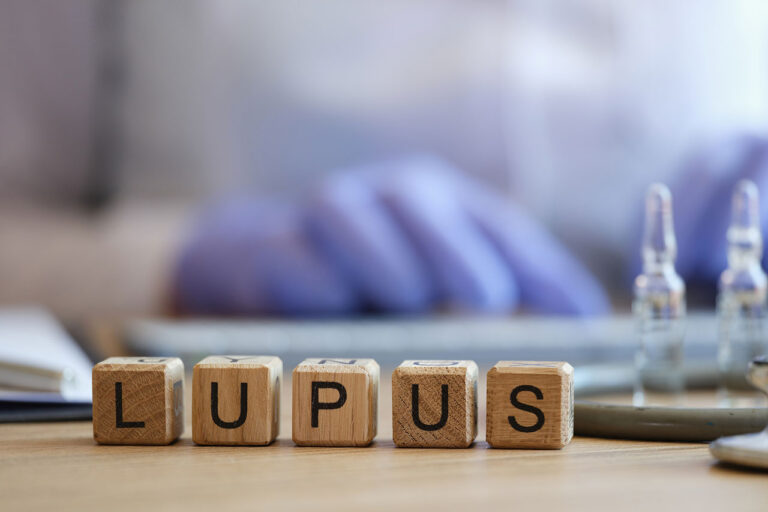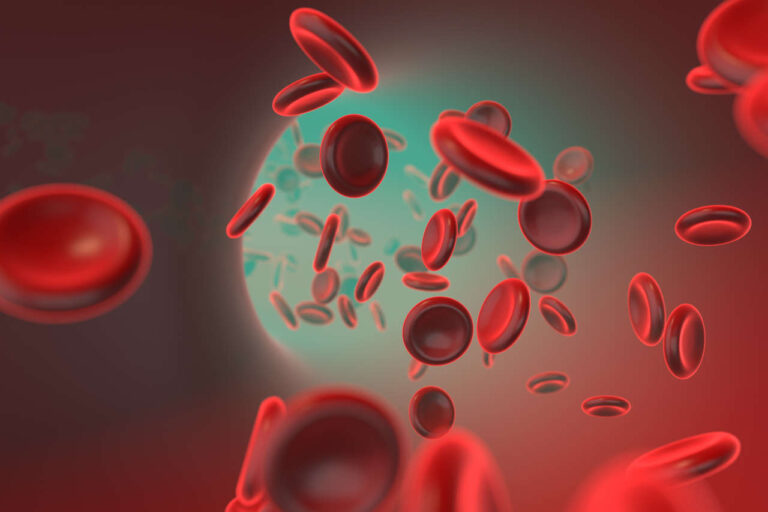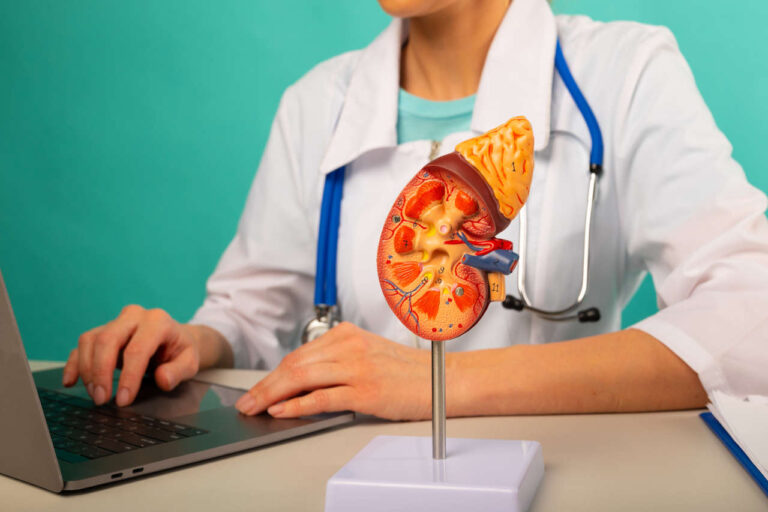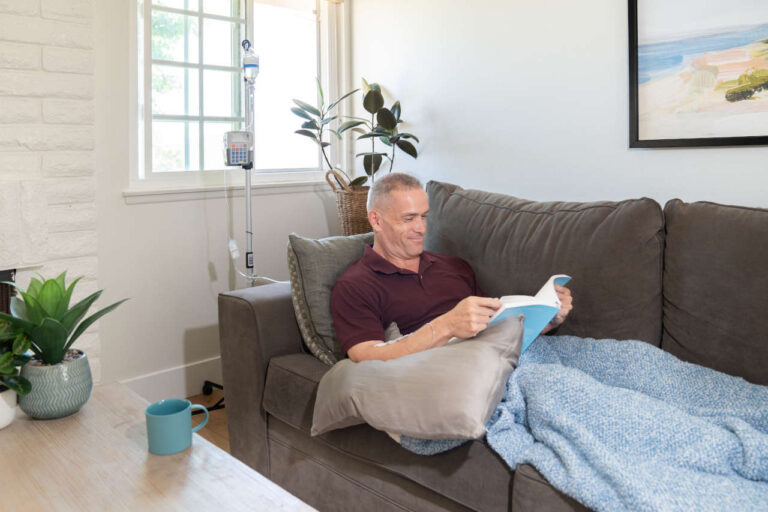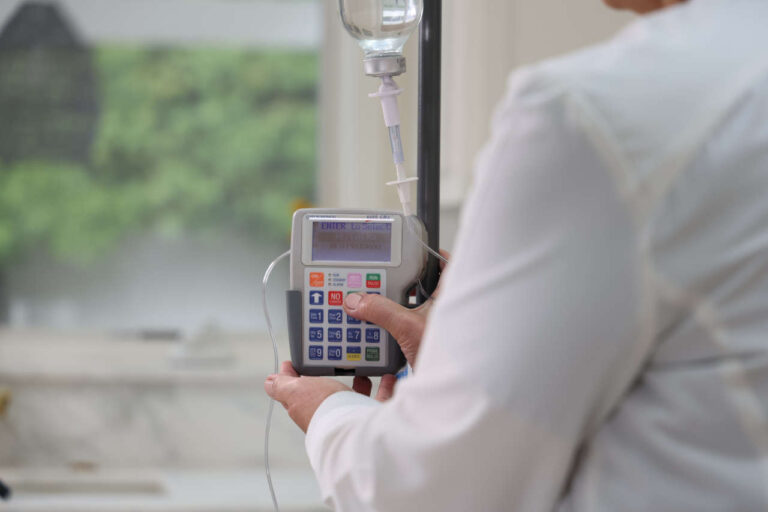
各种病例报告显示, IVIG 疗法可作为二线治疗 患有严重 Churg-Strauss 综合征的患者。
IVIG 有帮助吗?| 免费 IVIG 治疗信息
Churg-Strauss综合征(CSS)是一种罕见的自身免疫性和炎症性疾病,会导致小血管发炎(血管炎),尤其影响呼吸系统血管。发炎或肿胀的血管会限制血液流向肺部,常导致哮喘、鼻窦炎,严重情况下甚至会造成永久性器官损伤。
治疗Churg-Strauss综合征的标准疗法是使用皮质类固醇或手术。然而,在某些情况下, 静脉注射免疫球蛋白(IVIG)治疗 当常规疗法效果不佳时,建议将其作为二线治疗方法。
本文讨论了 Churg-Strauss 综合征的基础知识、IVIG 如何提供帮助,以及如果您或您所爱的人正在考虑使用 IVIG 治疗 CSS,会发生什么情况。
Churg-Strauss综合征:简要概述
2010年,医学专家将Churg-Strauss综合征更名为嗜酸性肉芽肿性多血管炎(EGPA),以反映该疾病的三个主要特征:
- 嗜酸性:嗜酸性粒细胞(一种白细胞)过度积聚,导致炎症和组织损伤
- 肉芽肿病:受感染组织因炎症反应而形成肉芽肿(免疫细胞簇)
- 多血管炎:影响全身多条血管的炎症
因此,EGPA 是一种以嗜酸性粒细胞过度积聚、肉芽肿形成和多条血管炎症为特征的疾病。这些因素共同导致受累器官(包括肺、皮肤和神经)出现症状和组织损伤。
EGPA 在患有哮喘或有过敏史的人群中更为常见。
与专家交谈
关于共付额援助IVIG 如何帮助患有 Churg-Strauss 综合征 (CSS) 的患者?
各类案例 报告 已经证明 静脉注射免疫球蛋白(IVIG)治疗 当其他标准疗法效果不佳时,IVIG 可以有效治疗 CSS 患者。由于 CSS 属于一类自身免疫性疾病,过度活跃的免疫系统会错误地攻击身体,因此 IVIG 可以帮助调节免疫系统,防止其攻击身体。
虽然 IVIG 的具体作用机制尚不清楚,但研究人员认为 IVIG治疗 静脉注射免疫球蛋白 (IVIG) 可发挥多种作用,改善 CSS 患者的生活质量。例如,IVIG 可以:
1. 抑制炎症
静脉注射免疫球蛋白(IVIG)疗法具有抗炎特性。它可以帮助减少血管炎症,最终降低严重器官损伤的风险。
2. 中和自身抗体
IVIG 也有助于中和或阻断自身抗体的活性。自身抗体是攻击健康细胞的异常蛋白质。其中一种名为 ANCA 的抗体存在于部分 EGPA 患者体内,但并非所有患者都存在。大约只有 40% 的 EGPA 患者存在这种抗体。
3. 降低血液嗜酸性粒细胞水平
嗜酸性粒细胞是一种参与过敏反应或感染的免疫细胞。CSS 患者的嗜酸性粒细胞水平通常是正常水平的两倍。这导致这些细胞在肺、皮肤、心脏或神经等组织中积聚,引发炎症和组织损伤。
对于 CSS 患者,IVIG 有助于 降低血液中的嗜酸性粒细胞水平它通过阻断嗜酸性粒细胞的活性来实现这一点。这可以防止嗜酸性粒细胞在组织中过度积聚。
如何对患有 Churg-Strauss 综合征的患者进行 IVIG 治疗?

IVIG 可在医院或家中通过静脉 (IV) 输注给药。该过程需要数小时,并且可能需要多次给药,具体取决于 CSS 患者的反应和症状的严重程度。
接受 IVIG 治疗后,您可能会出现头痛、疲劳、流感样症状或过敏反应。
谁可以接受 IVIG 治疗?
并非所有CSS患者都适合接受IVIG治疗。通常,以下情况可考虑接受IVIG治疗:
- 对 CSS 标准治疗反应不佳的患者
- 免疫功能受损的患者(使用标准免疫抑制药物后发生继发感染的风险更高)
- 复发或严重器官受累的患者
最佳IVIG家庭输液
IVIG 对 Churg-Strauss 综合征 (CSS) 患者的效果如何?
目前,仅有少数研究报道了IVIG对CSS患者的有益作用。基于这些研究结果,当常规疗法疗效不佳时,IVIG被认为是CSS的有效二线治疗方法。
例如, 双盲安慰剂对照研究 证明 IVIG 疗法可以改善严重 CSS 患者的血管炎症状并使嗜酸性粒细胞计数正常化。
同样地,另一个 病例报告 研究表明,IVIG疗法与以下药物联合使用可以改善神经血流 环磷酰胺 一位患有严重神经病变的CSS患者接受了IVIG治疗。经过三次IVIG治疗,嗜酸性粒细胞水平降低,血清抗髓过氧化物酶ANCA水平降至正常范围。因此,IVIG治疗可作为二线治疗。 对于 CSS 患者,当标准治疗无法取得良好效果时。
参考:
- Tsurikisawa, N.、Taniguchi, M.、Saito, H.、Himeno, H.、Ishibashi, A.、Suzuki, S. 和 Akiyama, K. (2003)。用大剂量静脉注射免疫球蛋白治疗 Churg-Strauss 综合征。 《过敏、哮喘和免疫学年鉴》, 92(1), 80-87。https://doi.org/10.1016/S1081-1206(10)61714-0
- Tsurikisawa, N., Saito, H., Oshikata, C., Tsuburai, T., & Akiyama, K. (2014).高剂量静脉注射免疫球蛋白治疗嗜酸性肉芽肿性多血管炎。 临床和转化过敏, 4(1)。https://doi.org/10.1186/2045-7022-4-38
- Umeda, A., Yamane, T., Takeuchi, J., Imai, Y., Suzuki, K., & Yumura, W. (2014).静脉注射免疫球蛋白和环磷酰胺可显著改善Churg-Strauss综合征神经病变。 呼吸病学病例报告, 2(2), 81-84。https://doi.org/10.1002/rcr2.56
- Taniguchi, M., Tsurikisawa, N., Higashi, N., Saito, H., Mita, H., Mori, A., Sakakibara, H., & Akiyama, K. (2006).Churg-Strauss 综合征的治疗:诱导缓解和静脉注射免疫球蛋白疗法的疗效。 国际过敏学, 56(2), 97-103. https://doi.org/10.2332/allergolint.R-07-142
- Nakamura, M., Yabe, I., Yaguchi, H., Kishimoto, R., Mito, Y., Fujiki, N., Houzen, H., Tsuji-Akimoto, S., Niino, M., & Sasaki, H. (2009).6例Churg-Strauss综合征相关神经病变患者的临床特征及成功治疗。 临床神经病学和神经外科, 111(8), 683-687. https://doi.org/10.1016/j.clineuro.2009.07.004


